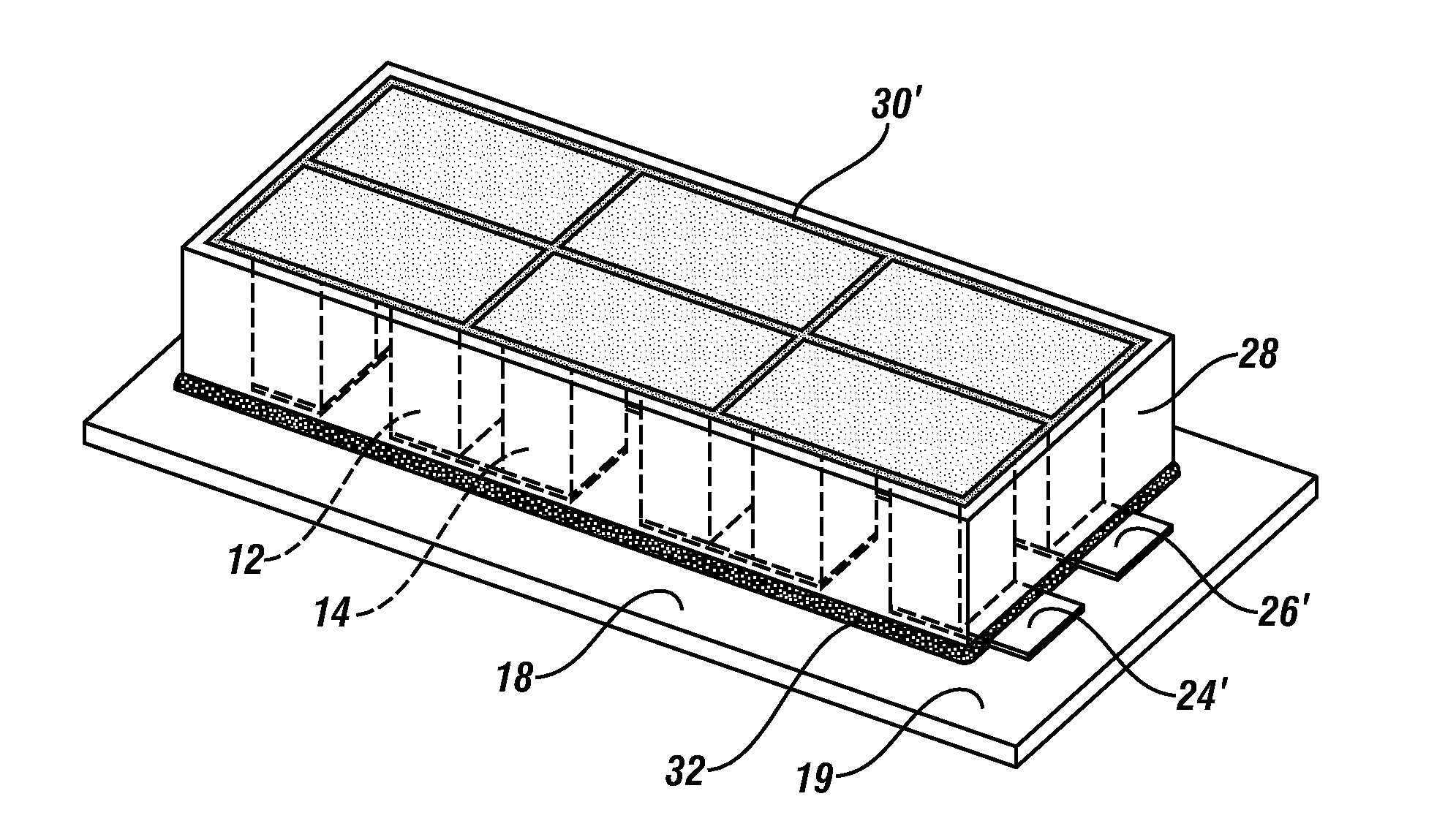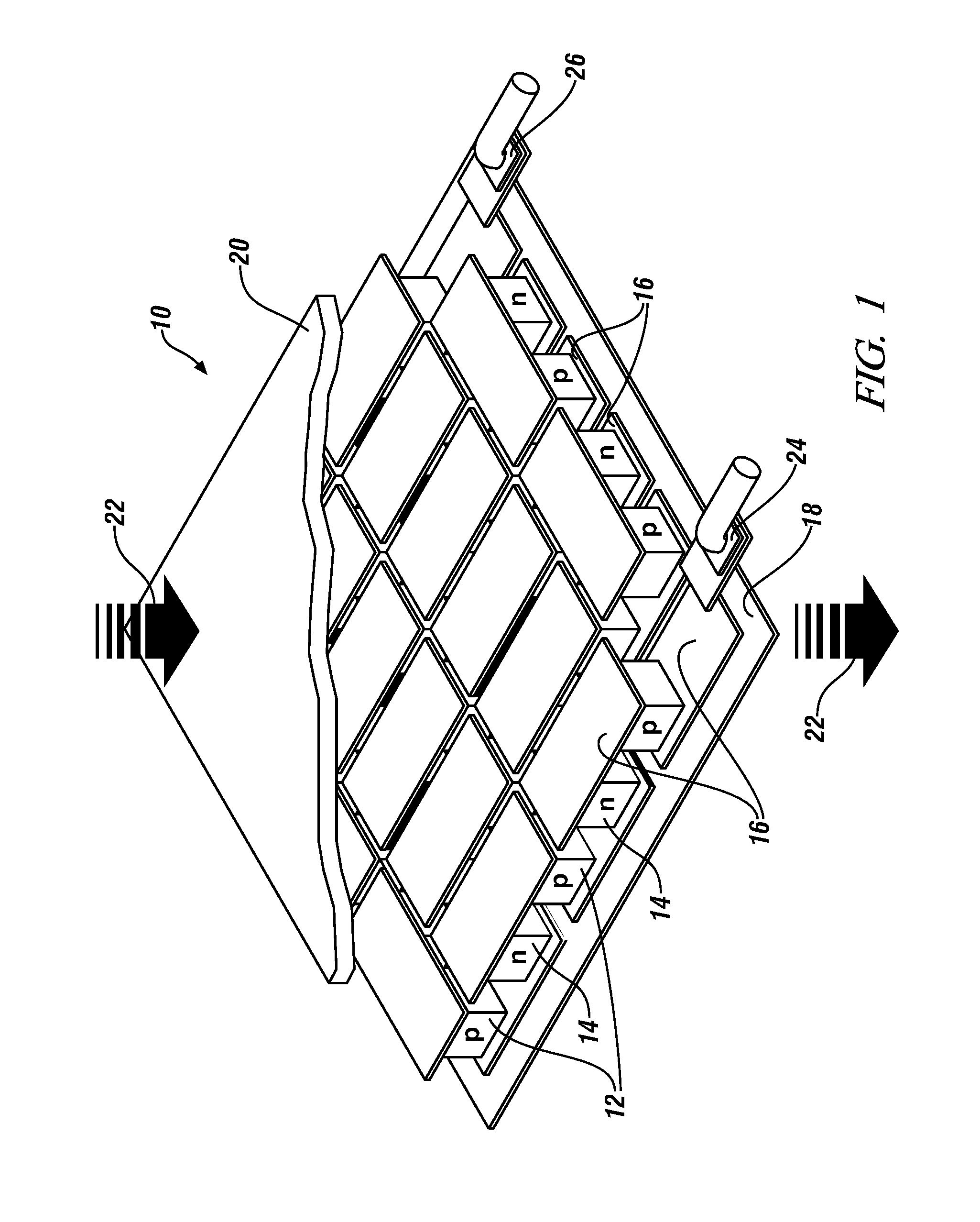Encapsulation of high temperature thermoelectric modules
- Summary
- Abstract
- Description
- Claims
- Application Information
AI Technical Summary
Benefits of technology
Problems solved by technology
Method used
Image
Examples
first embodiment
[0076]In the first embodiment, the thermoelectric device may be fully assembled and brazed prior to sealing by enameling. Since the enameling temperature for the exemplary Thomson Enamel ‘6000 clear’ enamel is about 650° C. the braze alloy should preferably have a solidus temperature greater than 650° C., although if the melting range is large say 100° C. or more, some minor melting might be acceptable enabling a solidus temperature of 640° C.-650° C. or so provided the liquidus temperature is not so high as to degrade the thermoelectric elements during brazing, even when conducted under inert atmosphere. Some suitable compositions with solidus / liquidus temperatures in parentheses may include: Cu86.8Sn7P6.2 (657 / 688° C.); Cu92.8P7.2 (710 / 793° C.); and Ag40Cu30Zn30 (674 / 727° C.).
second embodiment
[0077]In the second embodiment the thermoelectric device will be brazed after the vitreous enamel is applied, so that the liquidus temperature of the braze alloy should not exceed the temperature at which the enamel will undergo extensive flow. For the exemplary Thomson Enamel ‘6000 clear’ enamel, which undergoes extensive flow at about 700° C., suitable braze alloys may include: Al94.75 Si5.25 (575 / 630° C.); Al92.5 Si7.5 (575 / 615° C.); and Al90Si10 (575 / 590° C.), all of which are suitable for aluminum interconnects. Where sustained temperatures of about 600° C. or so will be encountered in service, a higher melting point brazing alloy such as eutectic alloy Cu75.9Ag17.6P6.5 (643 / 643° C.) which is suitable for copper interconnects may be preferred. Of course, the use of higher flow temperature enamels will enable the use of higher melting temperature braze alloys.
[0078]The particular thermoelectric elements, vitreous enamel composition, brazing alloy compositions, and temperatures c...
PUM
 Login to View More
Login to View More Abstract
Description
Claims
Application Information
 Login to View More
Login to View More - R&D
- Intellectual Property
- Life Sciences
- Materials
- Tech Scout
- Unparalleled Data Quality
- Higher Quality Content
- 60% Fewer Hallucinations
Browse by: Latest US Patents, China's latest patents, Technical Efficacy Thesaurus, Application Domain, Technology Topic, Popular Technical Reports.
© 2025 PatSnap. All rights reserved.Legal|Privacy policy|Modern Slavery Act Transparency Statement|Sitemap|About US| Contact US: help@patsnap.com



